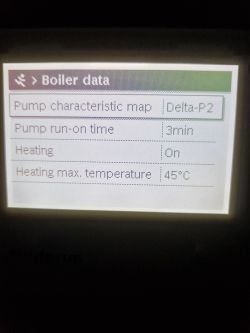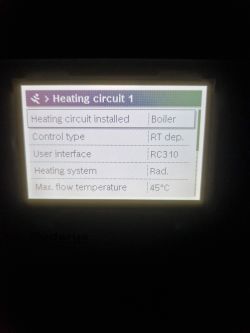I'll straighten it out a bit here, because condensation is not equal to CONDENSATION. What is it about? It's going to be a bit physical.
Condensation of water vapor from the exhaust gases of a condensing gas boiler results from the relative content of water vapor in the exhaust gases of the boiler and from the temperature point at which the relative water vapor content reaches 100% (I ignore the water vapor content above 100% that can be achieved, e.g. in the laboratory) . For a properly adjusted condensing gas boiler, the 100% relative humidity in the exhaust gases is at approximately 57 degrees (this also depends somewhat on whether the boiler draws dry or humid combustion air).
When the boiler exchanger has a temperature lower than the dew point for these exhaust gases, e.g. 50 degrees, the "excess water vapor content in the boiler exhaust gases" (that which cannot be contained in the temperature of 50 degrees in these exhaust gases) will condense on the exchanger, transferring the energy of the phase transformation of water from gaseous to liquid to the exchanger. The more condensed the exhaust gas temperature is on the cooler exchanger (lower exchanger temperature), the more water vapor will condense per m3 of exhaust gas.
Assuming that we have a well-set mixture composition, there is a significant difference between the exchanger return temperature of 55 degrees, 50 degrees, 40 degrees and 30 degrees. The possible energy recovery from condensation varies greatly. The energy of the phase transformation of water from the gaseous state to the liquid state is 2.27MJ/kg of condensed water, or 0.63kWh. When burning 1 m3 of gas, a boiler needs about 12 m3 of air, which means it emits about 13 m3 of exhaust gases (to put it simply, the exhaust gases are warmer).
So by burning 1 m3 of natural gas, we can additionally obtain on condensation:
To start with, air at a temperature of 57 degrees and a relative humidity of 100% contains just over 114g of water per m3
When the return temperature is 55 degrees, then (assuming ideal energy exchange in further calculations) with a relative humidity of 100% again, the water content in m3 of exhaust gases drops to less than 105 g, i.e. we would get a maximum of 0.009 kg per m3 of exhaust gases, i.e. 0.009 x 13 x 0.63kWh gives a condensation yield of 0.074kWh
When the return temperature is 50 degrees, the water vapor content in the exhaust gases drops to 83g, i.e. we gain 0.032kg per m3 of exhaust gases, i.e. the condensation gain is 0.26kWh
When the return temperature is 40 degrees, the water vapor content in the exhaust gases drops to 51g, i.e. we gain 0.063kg per m3 of exhaust gases, i.e. the condensation gain is 0.516kWh
When the return temperature is 30 degrees, the water vapor content in the exhaust gases drops to 30 g, i.e. we gain 0.084 kg per m3 of exhaust gases, i.e. the condensation gain is 0.688 kWh
The above calculations also explain why floor installations and low temperature supply (and therefore low return) are the most effective.
I used a relative and absolute humidity calculator:
https://www.otech.pl/kalkulator-wetosci/ Finally, you know that in the summer, when it is muggy (high humidity), you take a drink out of the fridge or pour a cold drink into a glass, water condenses on the glass. Because in muggy weather, such as 80% humidity at 30 degrees, the dew point is 26 degrees, water will condense on elements with a temperature lower than this.
The same experiment, but when the air is dry (e.g. in winter with radiators, when it's frosty outside and ventilation is a problem, the relative humidity can drop to 30% or less without humidification) when the temperature in the apartment is 20 degrees (and the humidity is 30%). dew point is below 2 degrees C.
This also explains the problem with fungus in some houses and apartments:
- faulty ventilation
- windows too tight, no air exchange
- many "humidity generators" (many residents, drying laundry in the apartment, the latter is not a problem like the others, ok, if the air is too dry, you can humidify the laundry)
- walls too cold, i.e. freezing, not insulated or too narrow, even with a relative humidity of e.g. 50% and a temperature in the apartment of 20 degrees, the dew point is just over 9 degrees, sometimes the walls, e.g. in frost, can be colder, then it literally pours water after them.




